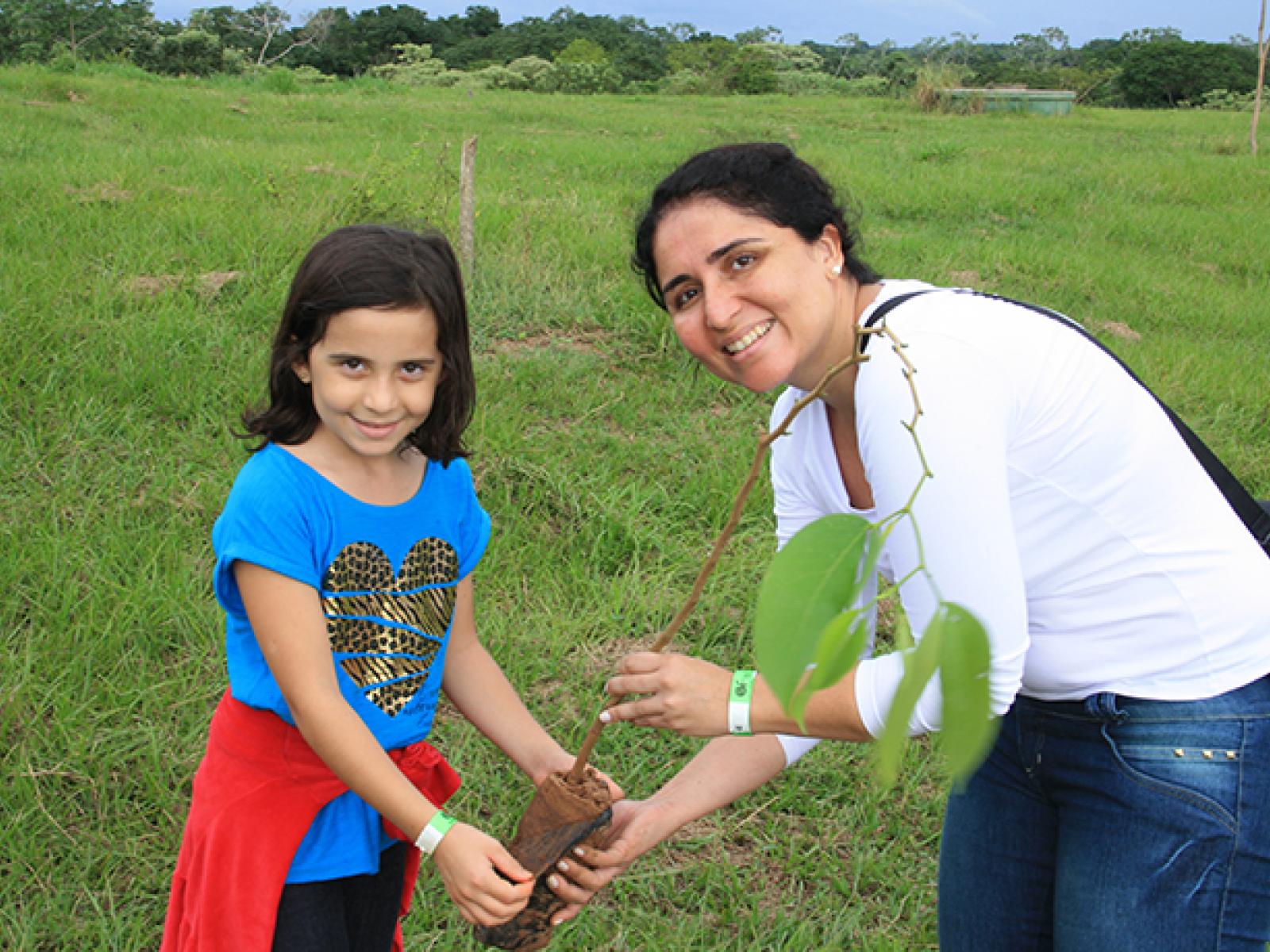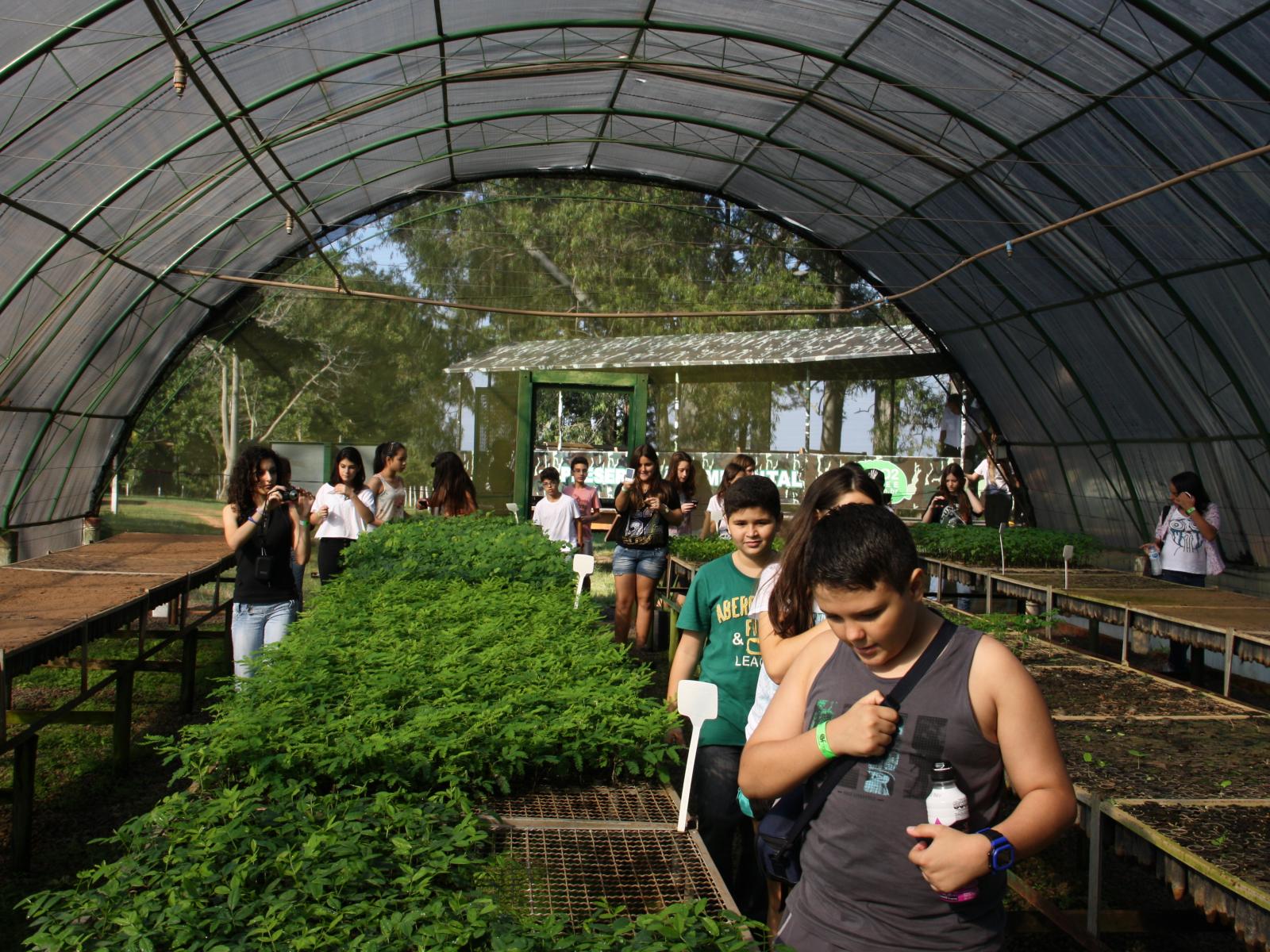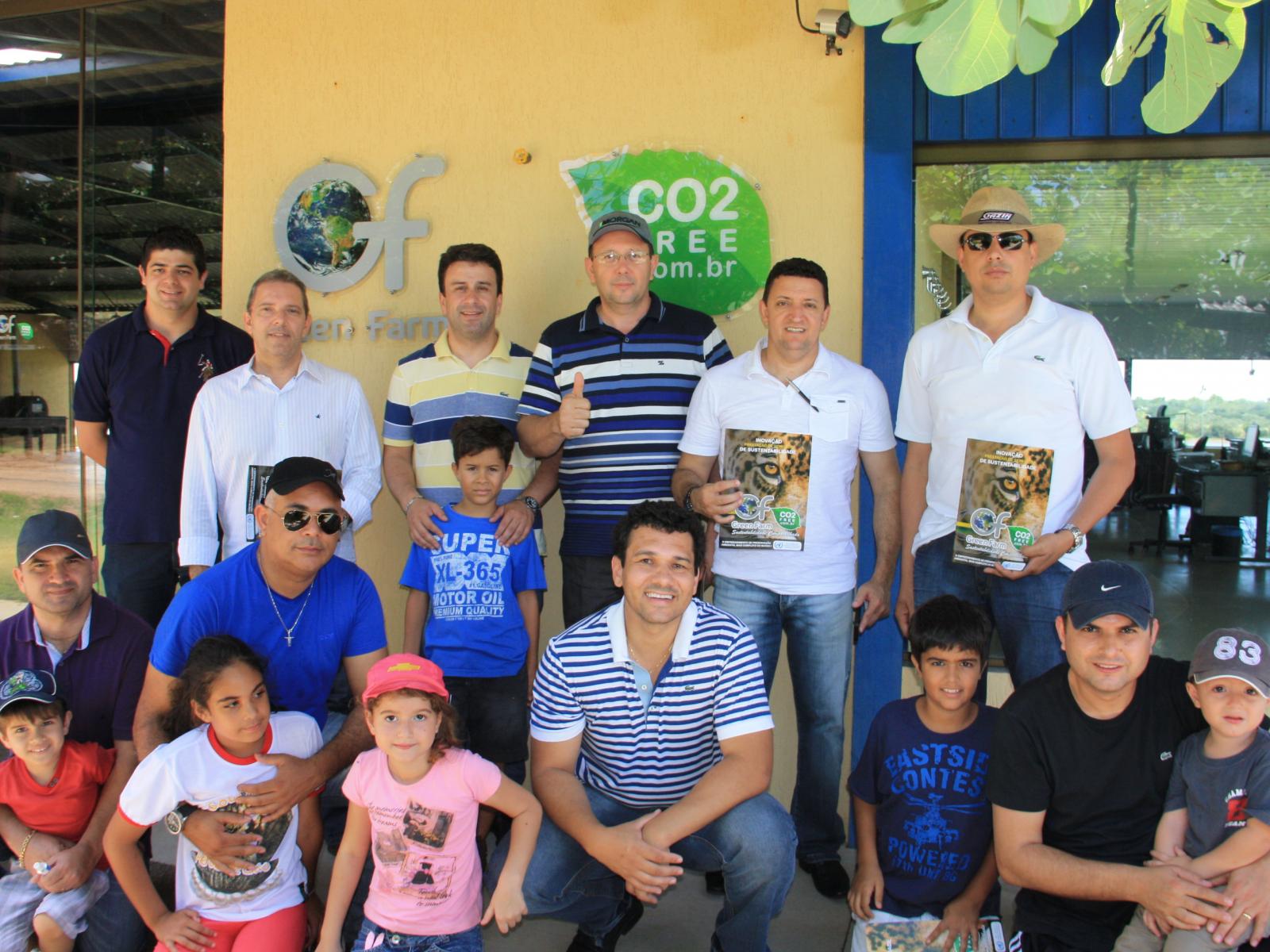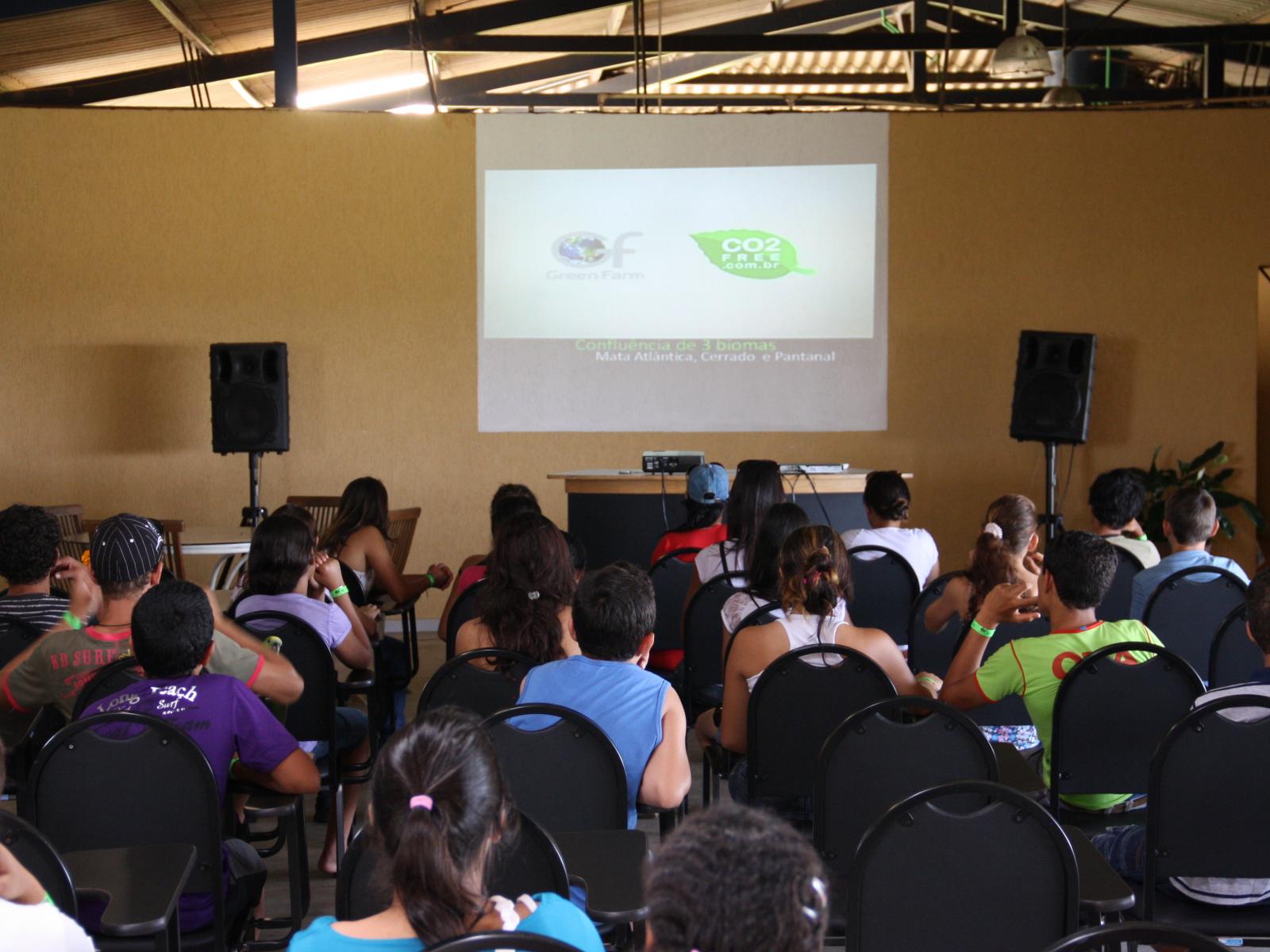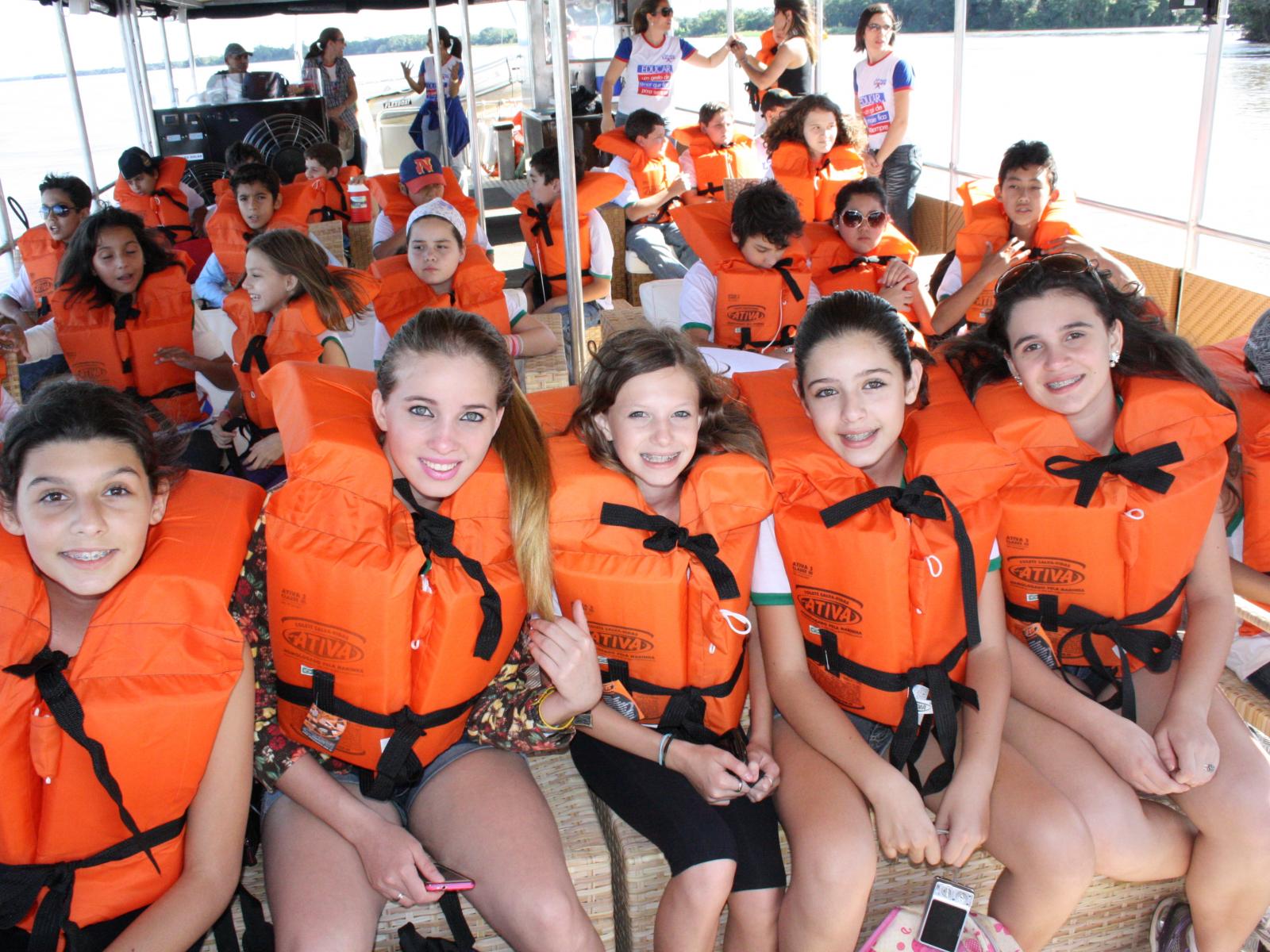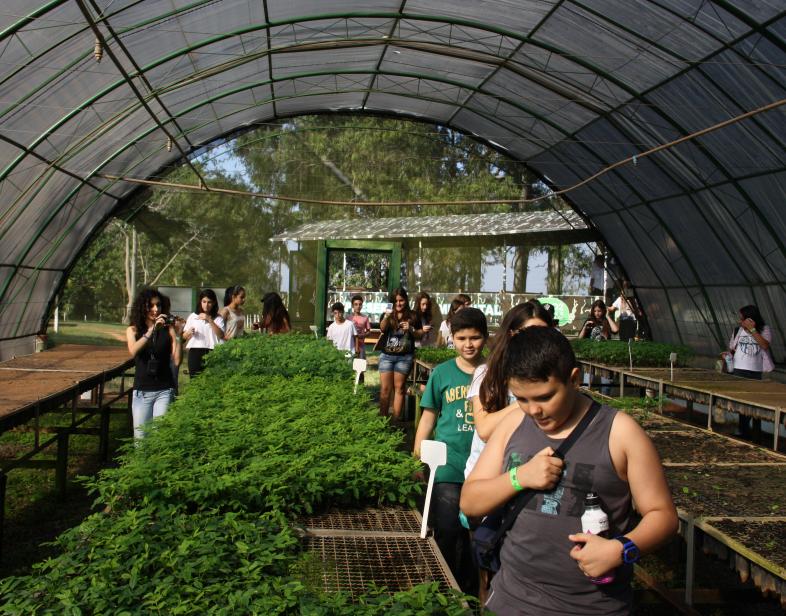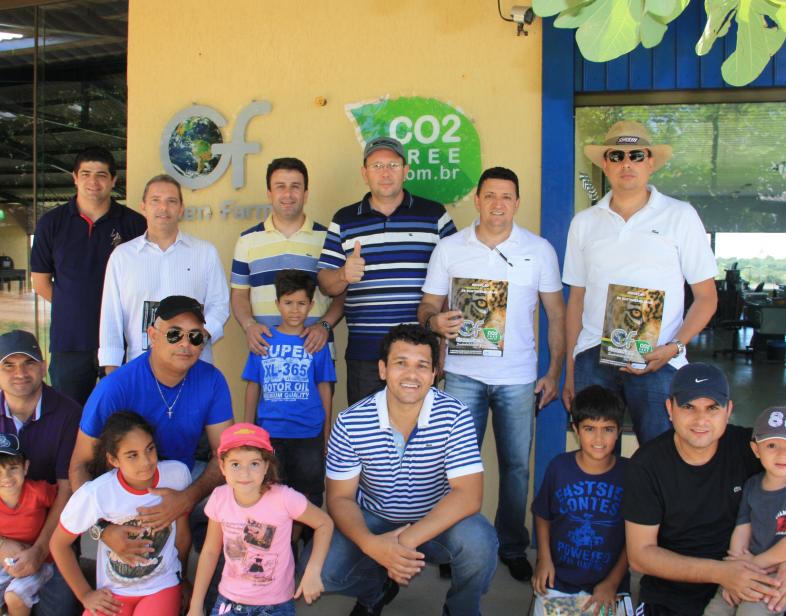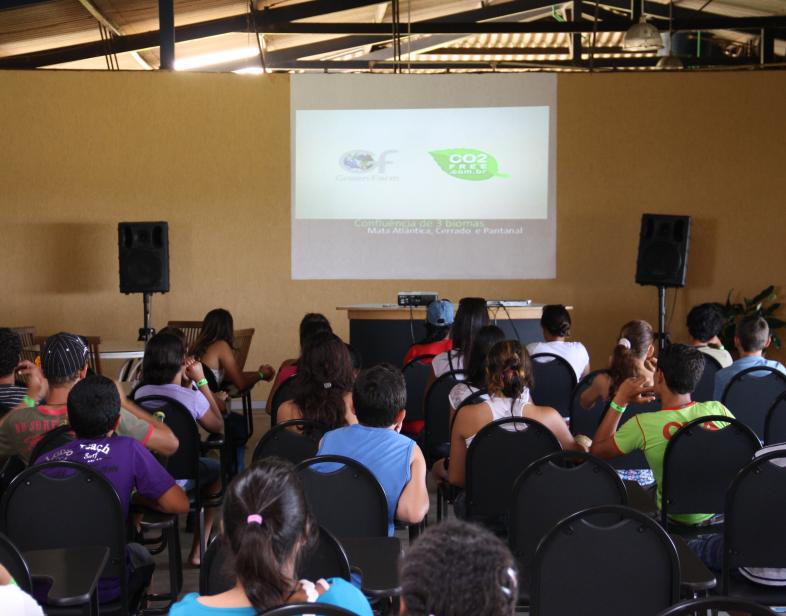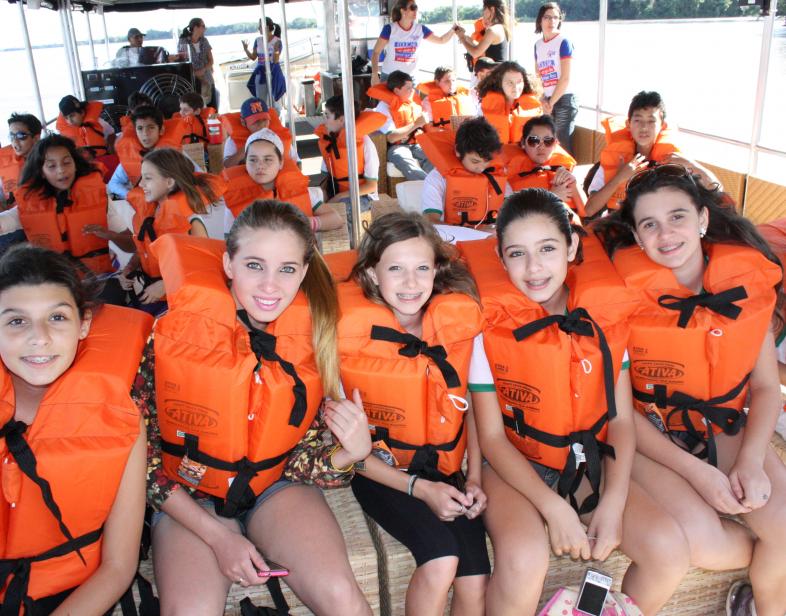An Overview Of Our Solution
Green Farm is a one-stop-solution to corporate RSC, applying the most updated scientific development to implement project activities. Green Farm is the first CSR at the market, offering large scale mitigation and adaptation project activities to compensate production and services chains socioenvironmental negative impacts on ecosystem. Green Farm activities include forest architecture projects and agroforestry and forestry system to increase sources of income and jobs creation. Its unique use of monthly fees reduce cash flow impacts of CSR investments, allow medium and long term green marketing planning, implementation and monitoring. By providing capacity building to participating companies it promotes knowledge sharing regarding ecosystem services impacts of daily activities and internal GHG emissions reductions plans.
- Population Impacted: 65.000 direct and some 250.000 indirect (participa
- Continent: South America
Last name
Organization type
Context Analysis
The pace of the planet's environmental degradation has accelerated in the last decades, and has caused movements in the opposite direction to try to slow down this process and create conditions for sustainable development. This includes CSR activities that are aligned with the reality of institutional investors. Businesses are looking for a profit and therefore have always associated risks. The valorization of the brand through the actions of CSR has repercussions in the public opinion related to the business. Is a strong to seize the problem of environmental quality of production and service delivery, as an opportunity to generate green business. Green Farm CO2FREE Project has been designed to operate within this scenario, offering a one-stop solution for companies looking for environmental compensation for licensing or searching into high impact Corporate Socioenvironmental Responsibility CSR activities.
Describe the technical solution you wanted the target audience to adopt
ONE-STOP SOLUTION FOR ENVIRONMENTAL LICENSING AND CSR. Corporations need to perform assessments and work on reducing, mitigating and compensating for socioenvironmental impacts. Usually those companies paid fees to the government in order to obtain licenses, and the government implement the compensation. This process has high transaction costs. Furthermore companies need to perform against social and environmental controls from society itself, and the Corporate Socioenvironmental Responsibility is the answer for that. With a monthly investment companies can rely on the services and routines developed by GF to fulfill regulatory commitments and / or voluntary targets for social and environmental performance. It integrates socioenvironmental assessments of production and services chains with ecosystem services provided by nature to people and the planet. It offers a prime property fraction of high value society and nature promotion activities.
Type of intervention
Describe your behavioral intervention
Companies focus on performing against local standards of socioenvironmental performance included within licensing process, those activities result on permission to operate. In order to increase socioenvironmental impacts it is necessary to accurately measure, reduce and mitigate pollution impacts, including those increasing global climate change. Green Farm CO2FREE invests on training staff at participating companies in order to implement internal GHG inventory and emissions reduction strategies. It also perform mitigation and adaptation planning in order to obtain carbon credits used to compensate neutralize emissions and obtain a certification for operations. Using this approach the project has promoted behavior change toward implementing SDG13, urgent action against climate change. The project participating companies GHG inventories registered reached up to some 50,000 tCO2e.
As needed, please explain the type of intervention in more detail
Green farm is a private business, focused on providing CSR services to business of all sizes and sectors. The financial mechanism allows for transfers of cash and technology, looking into accountability according to Paris Agreement and SDGs. Our modalities aligned to international, national, subnational and local priorities regarding SDG13 urgent action towards fighting climate change.
Participating companies do monthly installments based on a three-year contract and Green Farm sub-contracts local landholders to provide ecosystem services demanded by specific activities and sectors. The services provided by Green Farm include GHG emissions inventories and carbon credits to compensate / neutralize them.
.
Describe your implementation
Green Farm works with all sectors towards implementing GHG accounting, internal emissions reduction plans and compensation / neutralization by investing on low carbon development project activities’. Green Farm CO2FREE project first on-the-ground site (Fazenda Porto Bonito) sustainably manages 1,631 ha of natural forests and 2,173 ha of Peat lands, besides some 800 ha of pastures (AR potential) within a region with 99% of deforestation level. The project integrates land uses towards contributing to Parana River International Biodiversity Corridor landscape approach. The project already produced some 270.000 seedlings of native tree species, some distributed to local partners and others used to Sustainable Forest Management SFM 713 ha of Atlantic Forest, reforestation of 27 ha of Eucalyptus spp and 9 ha of native tree species. It produced short, medium and long term sustainable forest management plans SFMP, registered at local and state environmental organizations, elaborated MRV methodologies and project documents for generating 650.000 tCO2 of carbon credits (AR, REDD+ and HWP) from its reserves which were registered independently in 2017. In 2017 and 2018, the project assisted 13 companies on producing their GHG inventories, performing third party and registering independently. Those companies used carbon credits from Green Farm CO2FREE project to compensate / neutralize its emissions and received a certification of carbon neutral. All these procedures are concrete actions towards promoting the urgency to act against climate change. In order to promote awareness and engage people and organizations towards global climate change adaptation strategies, the project provides on-line, in-company and on-site training & Capacity building on ecosystem services to several sectors. It has several channels, including on-live TV, website, blog, Facebook, Instagram and other for dissemination of climate change and biodiversity threats and ways to lower human contribution.
External connections
We connect with all sectors by introducing GHG inventories to their production and services chains. Examples:
a. Green Farm CO2FREE and participating company 2018 at: http://www.paranacooperativo.coop.br/ppc/index.php/sistema-ocepar/comun…
b. Green Farm CO2FREE and participating company 2018 at: http://www.grupogazin.com.br/sustentabilidade
c. Green Farm CO2FREE and participating company 2018 at: http://www.greenfarmco2free.com.br/macmoveis/
d. Green Farm CO2FREE and participating company 2018 at: http://www.greenfarmco2free.com.br/ecoblog/arisp-vence-o-premio-fecomer…
e. Green Farm CO2FREE and participating company 2018 at: http://www.greenfarmco2free.com.br/valecard/
f. Green Farm CO2FREE and participating company 2018 at: http://www.greenfarmco2free.com.br/ecoblog/18358/
g. Green Farm CO2FREE and participating company 2018 at: http://www.baterax.com.br/#meioambiente
h. Green Farm CO2FREE and participating company 2018 at: https://www.facebook.com/GreenFarmCO2FREE/videos/1958067580894689/
i. Green Farm CO2FREE Institutional video 2017 at: https://www.youtube.com/watch?v=vcSL-Maluy4
j. Green Farm CO2FREE Institutional video 2017 at: https://www.youtube.com/watch?time_continue=37&v=AxNqS8QOLXA
k. Green Farm and participating company 2016 at: https://www.youtube.com/watch?v=WfKH8smmq0k
Who adopted the desired behaviors and to what degree?
The project prepares companies to mainstream climate change to daily operations, manly towards GHG inventory and internal emission reduction planning. Over the years 300.000 people have become in touch with the project activities and more than 30.000 visit on site, participating at the daily activities direct to raise awareness on biodiversity and ecosystem services provided by rural properties, including carbon sequestration and storage and alternative land uses to increase biodiversity conservation – agroforestry and silvipasture systems. We have 13 active participating companies from a diversified portfolio of sectors and activities and some 30 companies that are observers (prospects).
How did you impact natural resource use and greenhouse gas emissions?
The project already registered 650,000 tCO2e of forest carbon credits (using methodologies for AR, REDD+ and HWP) from reforestation and avoided deforestation and forest degradation within an integrated landscape approach to Parana River International Biodiversity Corridor at the buffer zone of Ilha Grande national Park and had 50.000 tCO2e compensate / neutralize from a total of 30 participating companies (Green Farm certification) with 13 companies GHG inventories registered and CO2FREE certified and 4 international and national awards on climate change action plus recognition from UNFCCC/PSI and IPBES/Capacity building. We have trained staff from participating companies, local students, faculties, universities, public agencies and others on how to perform GHG inventories using both GHG protocol for companies and GPC protocol for cities. In 2017 some 5,000 people participated in loco of Green Education training, learning about climate change adaptation and mitigation.
What were some of the resulting co-benefits?
In August, the project inaugurated facilities for exceptional children equine therapy in partnership with local APAE (Association of Family and Friends of Exceptional Children) and with investments from Green Farm and a private partner, one of the project participating companies. Up to today more than 300,000 people direct achieved by green marketing channels, and more than 30,000 participants at Green Education program (2018 IPBES Capacity Building of interest), some US$ 9M mobilized towards climate change adaptation and mitigation (2012-2020). Over 270.000 native tree species nursery produced and planted, 731ha of Atlantic Forest under SFM REDD+, 36 ha of AR (Eucalyptus and native), 2173 ha of preserved peatland (under development for AFOLU carbon credits generation). The project distributes annually superior genetic animals to improve local herds and facilitates classes for agroforestry system adoption to increase income for small landholders.
Sustainability
Green Farm CO2FREE is a market based revenue finance mechanism channelizing moneys from companies monthly payments into green economy development, integrating urban and rural environment towards ecosystem services inventory and mainstreaming into production and services chains. The long-term sustainability of the project is manly market based and recently the project is developing strategies to access socioenvironmental funding from public and private sources. Being a third part the project does not involve any additional fiscal or transaction costs, making it very attractive in terms of CSR cost X benefits for participating companies.
Return on investment
Green farm is a private business, focused on providing CSR services to business of all sizes and sectors. The financial mechanism allows for transfers of cash and technology, looking into accountability according to Paris Agreement and SDGs. The company invests on adaptive infrastructure, capacity building, marketing and sales a US$ 5 million so far and should require other US$ 1 million until 2020. Participating companies have paid some US$ 2 million and committed other US$ 1 million. Altogether, the project mobilized close to US$ 9 million (2012-2020). Participating companies do monthly installments based on a three-year contract and Green Farm sub-contracts local landholders to provide ecosystem services.
How could we successfully replicate this solution elsewhere?
Green Farm operational model, including the CSR club and Payment for Ecosystem Services, are recognized and successful alternatives for implementing Incentives for Ecosystem Services policies.The ecosystem services that will be most relevant for each project can be tailored by local managers of on site project activities, agreed with protected area management plan and locals inputs. The Green Farm model can replicate to other protected areas as well as to other ecosystems (Marine, oceanic, deserts etc). A market system approach to identify bottlenecks in terms of legal framework and infrastrucuture conditions at specific sites is needed; nonetheless, the financial model can be applied at scale in both rural and urban private and public sectors. With the current investment in 4,650 ha the project can assist around 300-500 companies and it is possible to reach up to 5000-10000 companies within the 125,000 ha buffer zone of Ilha Grande National Park, the first target landscape.
